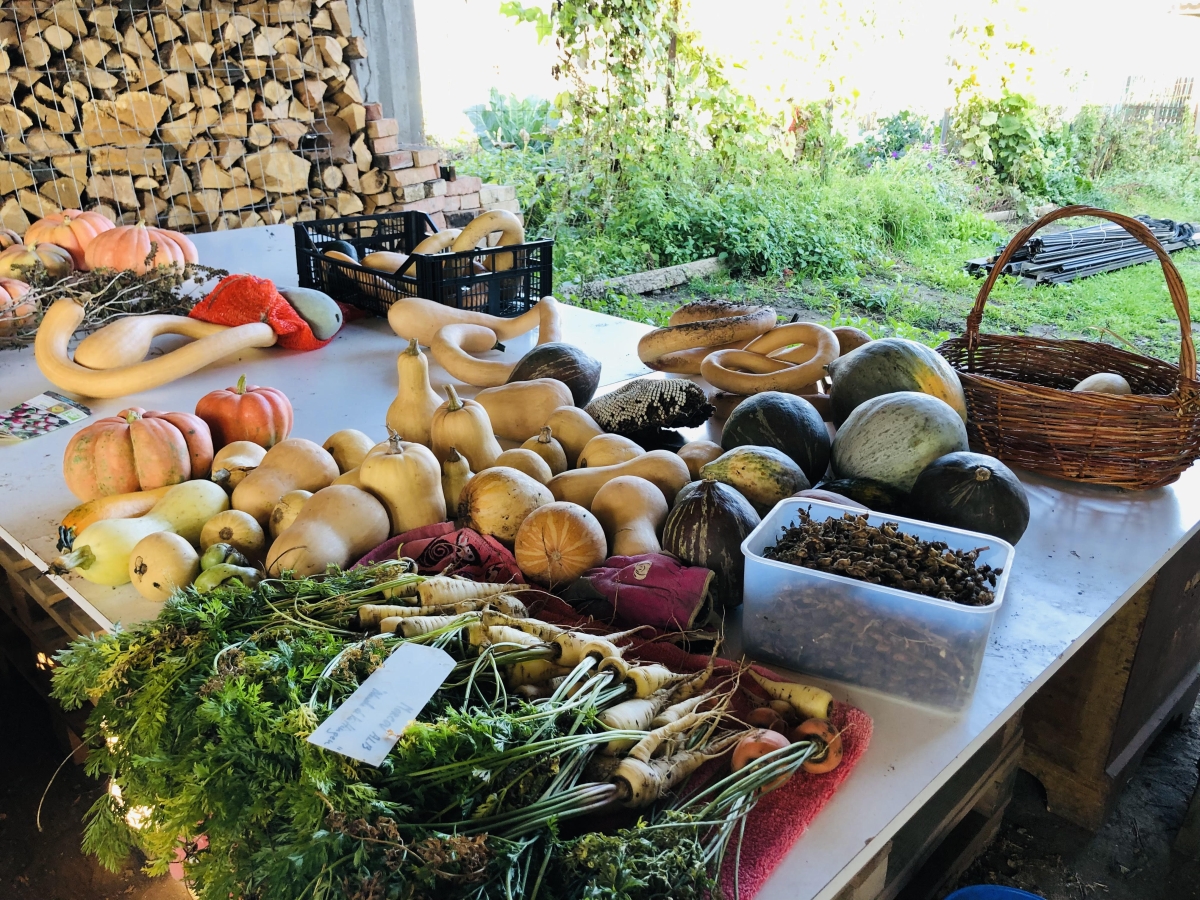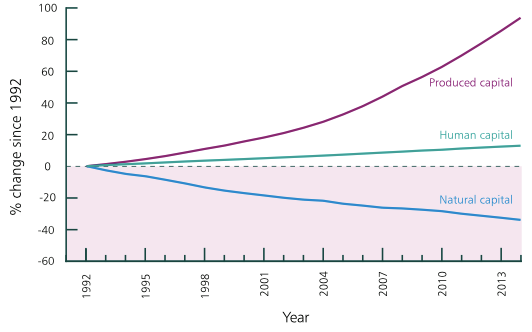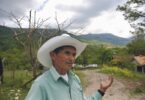For the Romanian version click here.
Covid-19 pandemic has disrupted peoples’ lives and brought about a range of economic hardships. The restriction on movement of people and goods affected different activities and sectors, including agriculture and food systems. The nature and intensity of these effects are tightly linked to resilience in any given system and to turn system more resilient to shocks like the pandemic means addressing the root cause of the problem. In this case, it means to integrate nature’s services in the economic formula, as there is no development where there are no resources to develop from. In the context of agriculture and food systems the resilience could be strengthened through agroecology – a systemic approach which has the potential to address social, ecological, and economic issues which made the food system, and hence, people vulnerable.

Covid-19 pandemic impact on food systems in Moldova
The Covid-19 pandemic had and continues to be a sanitary and a health issue all over the world. It came with restrictions on movement of people and goods, thus seriously affecting people, businesses, and the economy in many countries, including Moldova.
Agriculture being one of the most important economic sectors in Moldova, saw several hardships. Agricultural sector in Moldova has ‘the highest percentage of employed population in the whole economy’, and rural areas predominantly rely on farming and agriculture. Moreover, agriculture is a vital activity from the viewpoint of food production that any nation relies upon for its survival. Although, about 60% of population in Moldova has its own agricultural production, the entire food system was affected by the disruptions Covid-19 has brought about. Studies of global food supply report that “it resulted in the movement restrictions of workers, changes in demand of consumers, closure of food production facilities, restricted food trade policies, and financial pressures in food supply chain.” Indeed, Moldova experienced decrease in export of several products (e.g., meat and meat products by 40.6%, milk products and poultry eggs by 39.7%, oil seeds and oleaginous fruits by 30.1%) due to lockdowns in countries which are key trade partners of Moldova.
Looking closer at the food system in Moldova, economic hardships touched many actors along the food value chain. Small producers for instance, were mainly affected by the closure of local open markets during the lockdown. Many had restricted access to seeds and fertilizers – some of the most important inputs of agricultural production (besides pesticides) in conventional agricultural systems. The situation was exacerbated by the severe drought that hit agricultural sector in Moldova together with the pandemic in the first 4 months of 2020, which in some cases had devasted impacts on agricultural productivity. For instance, the sector saw a steep decline in vegetal production in 2020, being 26.8% lower than in the same period of 2019. Covid-19 also had an impact on access to food. According to the report produced by United Nations Development Programme, more than a half of respondents saw food prices rising and more 16% considered that food was becoming scarcer and at an increasing price. Furthermore, the poverty rate in “families where the main source of income was self-employed work in agriculture” reached 42.2%.
The pandemic: both cause and consequence
A resilient system would mean that it is capable of adapting or transforming in the face of unexpected change, in ways that continue to support human well-being.
Practically speaking, if a given system were resilient, it would have continued to carry out its functioning despite adversity or excessive stresses. The shock would not cause significant disruptions. Taking food systems as an example, that would mean a system where for instance, country doesn’t depend on food exports, because it has other economic pillars supporting it when this one is temporarily affected. At the level of producer, it would mean producers which do not depend on local markets because they know their consumers, have established relationship with them and therefore, can continue to sell their produce. As to production phase, a resilient agricultural system would mean independence or very low reliance on external inputs such as industrial seeds, chemical fertilizers, or pesticides. Finally, from the viewpoint of consumers, resilience presumes them having easier access to nutritious food in sufficient quantity and at a reasonable price at any point of time. From the viewpoint of ecological resilience, resilient agricultural systems would show very little or no difference in productivity when exposed to drought. These are, however, aspects of a system that Moldova longs to have. The question rises what the possible reasons for it are not yet to have it.
To answer this question, it is essential to look at the root cause of Covid-19, which appears to be a consequence of already existing problems, including agriculture and food systems in general. Already in the first months of the pandemic outbreak in 2020 the message was clear – Covid-19 is a consequence of an imbalanced human interaction with nature. Recently, the link between Covid-19 and nature degradation was reiterated at the workshop of Intergovernmental Science-Policy Platform on Biodiversity and Ecosystem Services (IPBES) on Biodiversity and Pandemics:
“There is no great mystery about the cause of the COVID-19 pandemic – or of any modern pandemic. The same human activities that drive climate change and biodiversity loss also drive pandemic risk through their impacts on our environment.”
It comes to no surprise that at least 60% of the 335 diseases that emerged in the period between 1960 and 2004, came from animals, and Covid-19 is considered a tip of the iceberg of the animal-borne and other infectious diseases which are caused by insensible use of natural resources.
Thus, Covid-19 is one of the consequences of the wrong-doing to the environment. Human activities have been altering the environment at an unprecedented rate which, among other things affected the ability of ecosystems to regulate pests and diseases:
“Emerging infectious diseases (EID) are driven by growing human populations increasingly disrupting natural ecosystems, globalization that can send an EID around the world even before its symptoms become apparent and changing climates that are affecting drivers such as increasing demand for animal protein, unsustainable agricultural intensification, and destructive harvest of natural resource.” (McNeely, 2021)
Indeed, nature and ecosystems can regulate infectious diseases – a ‘free’ service of nature humans benefit from and which among other things turns human-environment systems more resilient. This capacity has been eroded. Regulation of pests and diseases – a nature’s service or a so-called Nature’s Contribution to People, has been clearly disregarded in many human activities including agriculture and forestry. Thus, Nature’s Contributions to People (NCPs) which among others include regulation of air quality, formation of soils, regulation of freshwater quantity and quality when assessed by the IPBES in 2019 show that 14 out of 18 categories of NCPs have declined. To demonstrate, the regulation of air quality declined so much that it is estimated that only 1/10 of the global population breathes clean air while poor air quality causes about 3.3 million of premature deaths every year.
Pollinator diversity and soil organic carbon in agriculture declined. The productivity was reduced by land degradation in almost a quarter of global terrestrial area and “between $235 billion and $577 billion in annual global crop output is at risk as a result of pollinator loss”. Thus, nature’s ability to provide people with food while contributing to their physical, mental and emotional health has been decreasing along several indicators one of which is regulation of pests and diseases.
Moldova is not an exception. In fact, the country has seen the loss of its two most relevant natural resources such as water and soil. For instance, a recent analysis shows that small rivers are highly polluted[i], and there is a steady decrease of average annual volume of the Prut River flow in Moldova, which from 2.65 km3 (1977-2019) dropped below the average level, reaching values of 1.48 km3 (2012) and 1.19 km3 (in 2016)[ii]. In the context of climate change and more often occurring droughts, it creates risks of water scarcity at the national level. Moldova, which is currently relying on conventional agriculture thus demonstrates the detrimental impact of this production system on groundwater formation and aquifers:
“Agriculture irrigation accounts for 70% of water use worldwide and over 40% in many countries of the Organisation for Economic Co-operation and Development (OECD). Intensive groundwater pumping for irrigation depletes aquifers and can lead to negative environmental externalities, causing a significant economic impact on the sector and beyond.” (OECD, 2020)
As to the soil, it is estimated to be lost in amount of 18.5t per ha per year on average. Soil erosion with the degradation of agricultural land is a matter of concern in Moldova, where about 100,000 ha are subject to heavy erosion and progressive decline in soil fertility, and 800,000 ha are merely degraded.
Why has nature been neglected?
Since it is obvious that nature’s services are vital to people, it is of paramount importance to know why nature has been neglected in human activities. Understanding this relationship is also crucial for the adjustments in the system and behaviour that need to be part of change.
On one hand, the answer lies with the mainstream approach in the use of natural resources. In the race for economic growth, countries and economists have failed to integrate nature in their models – an issue that scientists, and decision-makers have been trying to address for decades. As suggests Dr Dasgupta in his report, ‘nature entered macroeconomic models of growth and development in the 1970s, but in an inessential form’. The recent ‘Agricultural Policy Monitoring and Evaluation’ produced by Economic Co-operation and Development (OECD) confirms that this problem in agriculture and food systems persists.

Figure 1- Global Wealth Per Capita, 1992 to 2014. Source: Dasgupta, P. (2021), The Economics of Biodiversity: The Dasgupta Review
The discordance or better to say the detachment of economic indicators from its ‘nature’ base can be observed on the Figure 1, which shows that produced capital has increased significantly while natural capital experienced heavy erosion. In practice, it means for instance that agriculture intensification is producing today more food than ever (the numbers show that the rise of world population reached 142% in the period between 1960s and 2013 while average cereal yields soared by 193%, thus far exceeding human needs), while causing degradation of soil, water stocks depletion, water pollution, biodiversity loss to name just a few. Indeed, “agriculture remains a major source of water pollution; agricultural fertiliser run-off, pesticide use, and livestock effluents all contribute to the pollution of waterways and groundwater.” (OECD, 2020)
The OECD ‘Agricultural Policy Monitoring and Evaluation’ also points out that beside environmental sustainability, public support in agriculture is “often failing to meet its stated aims of improving food security, and livelihoods”, thus adding the social inefficiency in current production systems.
At the level of mainstream economy, this disconnection is reflected for example by the use of the gross domestic product (GDP) as economic indicator for growth. It accounts for number of products and services produced but without taking into consideration the biosphere.
Meanwhile, researchers point out that using GDP per capita as an indicator for “Decent Work and Economic Growth” is limited as it doesn’t consider the finite character of natural resources and, hence is unrelated to indicators of environmental sustainability. It is also unrelated with levels of employment and broader measures of social wellbeing. Thus, not only GDP fails to account the environmental impacts of products and services, as it also doesn’t reflect the social ones such as long and healthy life, knowledge, and a decent standard of living. Nevertheless, GDP is still a measure of development Moldova not being an exception. It continues to be central in the political discourse both among national experts and Moldova’s partners in development.
Measuring nation’s wealth with such an indicator as GDP represents a certain logic that finds its reflection in many other aspects of human activities. To illustrate, it is the indicator of productivity in agriculture with the related to it, economic efficiency.
The roots of this logic go back to the post-war period when the process of modernization and industrialisation of agricultural sector spread over European continent. While in the European Union it was the adoption of the Common Agricultural Policy in 1962[iii], it was the agricultural policy of the USSR in Moldova. The main issue back then was hunger and, hence food security that industrial agriculture envisioned to address. It came gradually to squeeze out small farmers and peasants, as large monocultural production showed to be more efficient in a way that at the same level of output they had lower marginal costs than the smaller farms[iv]. In other words, it could produce more using less (in terms of production factors). It was due to mechanization that the production was using less hands, while working faster large land surfaces and using industrial seeds to produce huge amounts of food. It was due to the achievements of the Green Revolution which with the help of pesticides, artificial fertilizers and bio-technological seeds allowed nations to double or sometimes triple the production of high-yielding crop varieties. This together with the increased trade are de facto the base of the current globalized food systems, where progressive increase in productivity is a tool for export-oriented agricultural policies. Food security, though continues to be an issue worldwide as massive food production and cheap calories do not necessarily mean healthy, nutritious, and accessible food. Thus, increased production of agricultural commodities as well as GDP demonstrate that the world has stepped on a dangerous path that led humanity to where it stands today –progressive degradation of natural resources and, hence vulnerabilities which in no way can be compensated by economic growth whatsoever.
Vital reconciliation: ecological means economic
“Truly sustainable economic growth and development means recognising that our long-term prosperity relies on rebalancing our demand of nature’s goods and services with its capacity to supply them. It also means accounting fully for the impact of our interactions with nature.” Sir Partha Dasgupta
As it has been shown, economic models, GDP and productivity gains failed to integrate the dimension of natural assets. Accordingly, it means that the growth it shows is an illusion, as it doesn’t contain all the necessary data. The right economic indicator would reflect the true significance of the word economy which originally from Greek means ‘household management’. Respectively, the indicators would have to account the environmental and social costs of products and services. To understand the magnitude of this externalisation, let’s have a look at the cost of food today.
According to a senior international expert in sustainable agriculture Dr Angela Hilmi, consumers pay four times for food: the first time – in the shop, the second time – when they pay taxes that subsidize farmers, the third time – when it is necessary to clean up the environment, and lastly but not the least – when consumers must treat diet-related diseases.
For instance, the conventional production relying on monoculture (one crop production) has decreased dietary diversity which is linked not only to malnutrition but also to rapid rise of such human diseases like obesity, allergies, some cancers and cardiovascular diseases costing about US$2 trillion to the global economy. Moreover, nitrate leaching, and bioaccumulation of poisonous pesticides used in monoculture not only degrade soil and water (including eutrophication of water bodies), as these are also detrimental to human health. For instance, studies show that the nitrogen-related damage in the European Union is about €750 per person a year with two-thirds of it linked to agriculture. The cost of pesticides’ use reaches about €130 million in some countries in Europe and €8 billion in the US. Pesticides also have a very negative impact on bees and other insects indispensable in food production. For instance, it was estimated that ‘the value of crops worldwide depending on pollination ranges between US$235 and US$577 billion a year’.
Considering that only about 4% of production systems in Moldova are organic and unconventional approaches such as agroecology, regenerative agriculture or permaculture are barely becoming known, the real price of locally produced food would be shamelessly high and most likely, making this food unaffordable to local consumers. Although producers in Moldova have been informed and progressively encouraged to pursue more sustainable agricultural practices (such as no-till, cover crops and crop rotation), the approach is yet rather fragmented not addressing the environmental and social problems of agricultural and food systems in their entirety.
It is much more than mere environmental externalities. Conventional agriculture and the food system it helped to create has many social impacts. It becomes even more challenging to monetize for instance web of human relationship, trust and other values that are indispensable for any society to function. In the context of food systems these were eroded due to progressive growth of long supply chains and globalization. Export and international trade have overshadowed the mind of states which forgot about the importance of economy at the scale of a city, a village, a community. In this export-oriented rather than community-oriented system, the direct relationship between consumer and producers have been progressively replaced by supermarkets where there is no personal contact whatsoever.
While people especially in urban areas got used to do their shopping in supermarkets, this system has disempowered communities which previously had a diversity of small shops or markets with local producers selling their produce directly. In Moldova, where the largest part of the population lives in cities of Chisinau and Balti, the situation is becoming similar to the one in developed countries, where supermarkets are the main source of groceries. These, however, do not provide any information on how this food was produced, how much pesticide was applied or how much nitrate was leached into the river. Neither does it say how much impact such a production has on rural people and rural livelihoods.
Thus, shorter supply chains are crucial to sustainable food systems. Furthermore, researchers emphasize the importance of human relationships to the systemic economic health, as they contribute to collective learning and innovation:
“the web of human relationships and values is also more important than GDP growth per se because society’s vitality i.e., its ability to produce, innovate, adapt, and learn depends almost entirely on these relationships and values.”
Furthermore, export-oriented production together with liberalization of the market and free trade agreements have exacerbated the problem in agriculture and food systems by creating unhealthy competition to local producers in many countries around the world, including Moldova. A vivid example is the dumping of Ukrainian milk squeezing out local milk producers. Thus, in 2018 the constant decrease in milk production marked a decline in 15%. More we import, more dependent, and hence vulnerable we are. The price volatility as well as any disruption in production will be felt immediately. To illustrate, the example of buckwheat – a nutritious crop making an important part of food culture in Moldova which practically ceased to be cultivated, and now is imported from Russia. Although in 2000 it accounted for 11 thousand hectares, in 2012 it reached the bottom line of just few hundred. Recently in August 2021 there was a relapse of a depletion of buckwheat in supermarkets imported from Russia, which à propos not long ago was accused of containing dangerous pesticide glyphosate fifty seven (57) times exceeding the norm.
These examples of extinction of vital agricultural sub-branches have economic impact but above all, social as it exposes local population to risks, hence reducing the resilience to possible shocks. Short supply chains and local market are therefore essential to recover, as these not only strengthen communities, as they also ensure dietary diversity and increase local food autonomy. This is relevant both for rural and urban areas. In Moldova, however, where about ¼ of population lives in the capital of Chisinau, short supply chains with some of the production relocated to the city could save millions to the country economy. To illustrate, a case study of city food self-reliance showed that between US$29 to US$115 million can be saved if the food production is at least partially local.
Agroecology – a comprehensive approach to food systems problem
To conclude, solution to the root cause of the Covid pandemic as well as the degradation of water and soil in agriculture, lies within the attitude to nature and how we manage natural assets within the economic logic. In the context of food systems, it is also about sufficient, accessible, and nutritious food as well as acknowledgement of the main asset managers in agriculture – the farmers. On one hand, addressing these issues will help to turn production environmentally and socially sustainable as it will also create the system’s resilience to possible shocks and adversities.
Is there a solution? The answer is yes. Experts, producers, and international organizations argue that agroecology – a science and a social movement, can address several issues at once, thus transforming the food systems shaped by the Green Revolution and liberalization. Evidence shows that this approach helps to improve water resilience, to ensure food security at a country level, to increase resilience to environmental hazards, as well as to re-enlarge employment and increase income in agricultural sector.
As defined by the Food and Agriculture Organization (FAO) of the United Nations, it is based on 10 elements: diversity, co-creation and sharing of knowledge, synergies, efficiency, recycling, resilience, human and social values, culture and food traditions, responsible governance and circular and solidarity economy.
Each of these elements can help to address several pressing issues in agriculture and food systems. Adapted to local environmental conditions and presenting diversified systems, agroecology allows producers to preserve seeds – the base of any production[v]. Recycling the biomass (e.g., mulch) in the system reduces, and further eliminates the need for artificial fertilizer, thus not only saving money to the producer but also avoiding overcharging soil with fertilizers which create biochemical imbalance and leak of nitrates excess in the groundwater aquifers. Using the synergy principle which in practice means combining wisely different plant and crop species enhancing their ‘collaborative’ functions helps to phase out pesticides – another production expense and pollutant. Diversity of crops as opposed to monoculture (in conventional production) helps to create economic resilience. Mariana Seremet, the responsible for implementing the FAO Tool for Agroecology Performance Evaluation in Moldova has confirmed that
“If let’s say, there is a severe drought event which affects crops and out of 15 products, two crops fail to grow, this is fine because there are still 13 that producers can offer to the market. Another example, if, for instance, five products from 15 are not in demand on the market, this is fine too because the other 10 would still be sold.”
All the ten agroecology elements long to create more autonomy to the producer not only by cutting expenses in production but also contributing to food safety at the household level, ensuring more healthy and diversified diets. Therefore, agroecology represents a huge opportunity for people in Moldova, where the largest part of producers are subsistence and small-hold farmers. As a matter of fact it also represents opportunities for medium and larger producers, in particular in the livestock sector, where farmer can produce meat in organic way ensuring both animal and soil health at once. As a consequence, agroecology helps producers to achieve both organic and efficient production (with very few or no inputs at all), which can subsequently give rise to export of high-quality foods (e.g., organic dry fruits, teas, fruit vinegar), thus creating a high added value. The study conducted by the Food, Farming and Countryside Commission in the UK notes that ‘by achieving dramatic reductions in input costs, agroecology businesses can achieve higher levels of value added and hence profitability for the farmer’.
As to the social dimension, agroecology helps to restore and strengthen communities, as it “seeks to reconnect producers and consumers through a circular and solidarity economy that prioritizes local markets and supports local economic development by creating virtuous cycles.” Moreover, in order to ensure the respect of farmers and rural workers’ rights, the decision-makers have a United Nations Declaration on the Rights of Peasants and Other People Working in Rural Areas, which Moldova is signatory to.
To conclude, agroecology represents a strong potential to reconnect the three dimensions of sustainable development in agriculture, thereby recovering their original integrity while contributing to more socially, environmentally and economically resilient food system.
REFERENCES:
[i] The source of this pollution comes from three key factors: companies, households and chemicals used for soil.
[ii] UCIP IFAD, Ghid pentru autoritățile publice locale din mediul rural privind adaptarea si implementarea masurilor de atenuare la schimbările climatice, 2021
[iii] Roederer-Rynning, C. (2015). Policy-Making in the European Union (7th ed.), Chapter 8: The Common Agricultural Policy: The Fortress Challenged (196-217). Oxford: Oxford University Press
[iv] Baldwin, R. E., & Wyplosz, C. (2019). The economics of European integration (6th ed.), Chapter 9: The Common agricultural policy (205-229). London: McGraw-Hill Education.
This article has been prepared within the framework of the project ”The Social Dossier” in collaboration with Friedrich-Ebert-Stiftung Moldova.
Background image: the harvest from the permaculture garden ”Grădina Moldovei” (Cigîrleni, Ialoveni).








